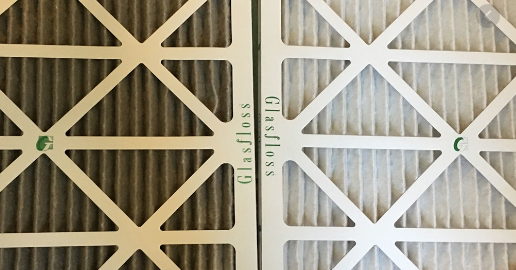This week, we are going to discuss where we go from here, now that the fires are out for the most part, and we begin to step back out into the world and take back our lives.
Many of you reached out and asked, “what will happen to our lungs after this horrific air quality?” and “any idea how to get that campfire smell out of our homes?”. I can answer you honestly when I say, “I have no idea“. What I can do, however, is research these topics for you, and that I did quite willingly. Anything for my readers. I adore you.
Let’s tackle the air quality questions first, shall we? In order to understand air quality, we must first define what “normal” looks like. A healthy air quality index (AQI) range for any given day is a score between 0-50. Many of our towns saw air quality indexes over 300, which made the air hazardous to breathe.
In order to determine if the air we breathe is healthy, the EPA measures the quality of ambient air for five major air pollutants that affect health and are regulated by the Clean Air Act. These are:
- Ground-level ozone
- Particle pollution (a.k.a. particulate matter)
- Carbon monoxide
- Sulfur dioxide
- Nitrogen dioxide
According to the EPA:
Smoke is made up of a complex mixture of gases and fine particles produced when wood and other organic materials burn. The biggest health threat from smoke is from fine particles. These microscopic particles can penetrate deep into your lungs. They can cause a range of health problems, from burning eyes and a runny nose to aggravated chronic heart and lung diseases. Exposure to particle pollution is even linked to premature death.
Some people are more at risk
It’s especially important for you to pay attention to local air quality reports during a fire if you are
- a person with heart or lung disease, such as heart failure, angina, ischemic heart disease, chronic obstructive pulmonary disease, emphysema or asthma.
- an older adult, which makes you more likely to have heart or lung disease than younger people.
- caring for children, including teenagers, because their respiratory systems are still developing, they breathe more air (and air pollution) per pound of body weight than adults, they’re more likely to be active outdoors, and they’re more likely to have asthma.
- a person with diabetes, because you are more likely to have underlying cardiovascular disease.
- a pregnant woman, because there could be potential health effects for both you and the developing fetus.
How to tell if smoke is affecting you
High concentrations of smoke can trigger a range of symptoms.

- Anyone may experience burning eyes, a runny nose, cough, phlegm, wheezing, and difficulty breathing.
- If you have heart or lung disease, smoke may make your symptoms worse
- People with heart disease might experience chest pain, palpitations, shortness of breath, or fatigue.
- People with lung disease may not be able to breathe as deeply or as vigorously as usual and may experience symptoms such as coughing, phlegm, chest discomfort, wheezing, and shortness of breath.
Symptoms are an indication that you need to reduce exposure.
Dust masks aren’t enough! Paper “dust” masks or surgical masks will not protect your lungs from the fine particles in wildfire smoke. Scarves or bandanas (wet or dry) won’t help, either. Particulate masks known as N-95 or P-100 respirators will help, but they must fit well and be used correctly. They are sold at many hardware and home repair stores and online.
If you are advised to stay indoors, take steps to keep indoor air as clean as possible. Keep your windows and doors closed – unless it’s extremely hot outside. Run your air conditioner, if you have one. Keep the filter clean to prevent bringing additional smoke inside. Open windows to air out the house when air quality improves.
Note: If you don’t have an air conditioner, staying inside with the windows closed may be dangerous in extremely hot weather. In these cases, seek alternative shelter, such as with relatives or a cleaner air shelter.
Help keep particle levels inside lower. When smoke is heavy for a prolonged period of time, fine particles can build up indoors even though you may not be able to see them. Try to avoid using anything that burns, such as wood fireplaces, gas logs, gas stoves – and even candles. Don’t vacuum. That stirs up particles already inside your home. And don’t smoke. That puts even more pollution in your lungs, and in the lungs of people around you.
As to the question of how to clean your homes, I went to the Red Cross for tips:
Cleaning Up and Removing Smoke Odor
- Products containing tri-sodium phosphate (TSP) can reduce odors in fabrics. TSP is caustic so be careful! Read the label for directions and safety instructions.
- Test garments before using any treatment, and follow the manufacturer’s instructions. Smoke odor and soot can sometimes be washed from clothing that can be bleached. Measure 4 to 6 tbsp. Tri-Sodium Phosphate and 1 cup household cleaner or chlorine bleach for every gallon of warm water you will use. Alternatively, consider washing clothes in cold water with your usual household laundry detergent, and adding one tablespoon of pure vanilla extract.
- To remove soot and smoke from walls, furniture and floors, use a mild soap or detergent or mix together 4 to 6 tbsp. tri-sodium phosphate and 1 cup household cleaner or chlorine bleach to every gallon of warm water. Wear rubber gloves. Be sure to rinse surfaces with clear warm water and dry thoroughly.
- Wash walls one small area at a time, working from the floor up to prevent streaking. Rinse with clear water immediately. Ceilings should be washed last. Do not repaint until walls and ceilings are completely dry. Reduce the chances of growth of mold and mildew by wiping down all surfaces that had gotten wet with a solution of one cup of liquid household bleach to a gallon of water. (Test surfaces to ensure that the bleach solution will not discolor these surfaces. To conduct this test, wipe a small area of the surface with the bleach solution, and allow it to dry at least 24 hours.)
- Washable wallpaper can be cleansed like painted walls, but do not wet through the paper. Use a commercial paste to repaste any loose edges or sections.
 Lastly, let’s talk about pets and safety:
Lastly, let’s talk about pets and safety:
Fire retardants may have been used around your home either outside or inside. Ensure animals do not ingest water from puddles containing fire retardants or fire residue.
If your pet appears to be ill from ingesting fire retardants or fire residue, take them to a
veterinarian.
Last tip: Change all the filters, even your CPAP filter. My husband’s CPAP filter was filthy as was our truck filter.
I hope this blog answered some of your questions. If not, keep asking and I will continue to research for you.



 y Linda Tate, Communications Director, Northwest Osteopathic Medical Foundation
y Linda Tate, Communications Director, Northwest Osteopathic Medical Foundation